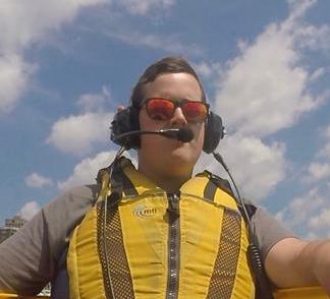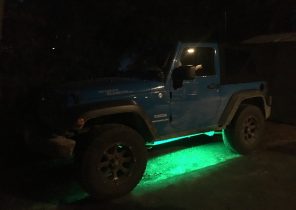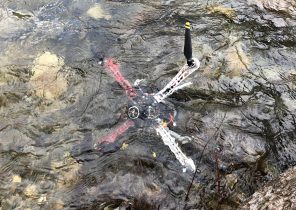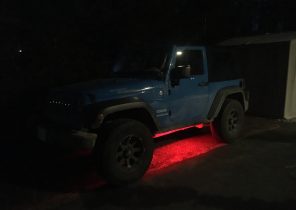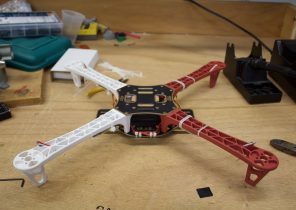After the first iteration of underglow had quite literally gone up in smoke, we were made aware of the serious durability requirements of an electrical system strapped under a car, and realized some major design changes were needed. The two major problems we encountered in the first revision were that the built-in waterproofing on the store-bought LED strips broke down, and that when something inevitably broke with the waterproofing, having an always-on power supply could be disastrous. It was at this point that we realized this would be a full scale project and we couldn’t just slap on store-bought hardware and call it a day. We of course had no idea that it would actually take over 4 years to get something we were satisfied with, because this was 2016 and that’s definitely when this was written 😉
We tackled each of the problems individually. To keep the power off until we needed it, a setup of 4 relays was designed such that when any of the three color switches was pressed a relay would connect the common positive of the strip to the battery, and ground the appropriate color to complete the circuit and turn it on:

Three of the largest diodes I had ever worked with later, and this system actually worked pretty well. However, it did look like a terrible rats nest and I’ll save your eyes from having to actually see the final product. Suffice it to say it involved more epoxy, zip ties, and shrink wrap than I am proud of.
To solve the issue of the commercial waterproofing being completely insufficient, we started from scratch with a bare, flexible pcb strip and did all the waterproofing ourselves. We took an aluminum C-channel, put the LEDs in it after some spacers, then filled the entire thing with a casting resin:

This proved to be slightly problematic from the start for several reasons. First, we had not secured the strip in place with anything besides the adhesive that comes on the back, so large sections of it lifted up and out of the channel:

Second, we didn’t do a great job damming the ends, so resin flowed out onto the table. It also flowed over the top but that’s just because we accidentally dumped in way too much. Also, turns out the resin we were using reacted with the plastic the mixing cup was made out of, so the bottom of the cup melted off spilling the rest of the resin all over my (thankfully gloved) hands:
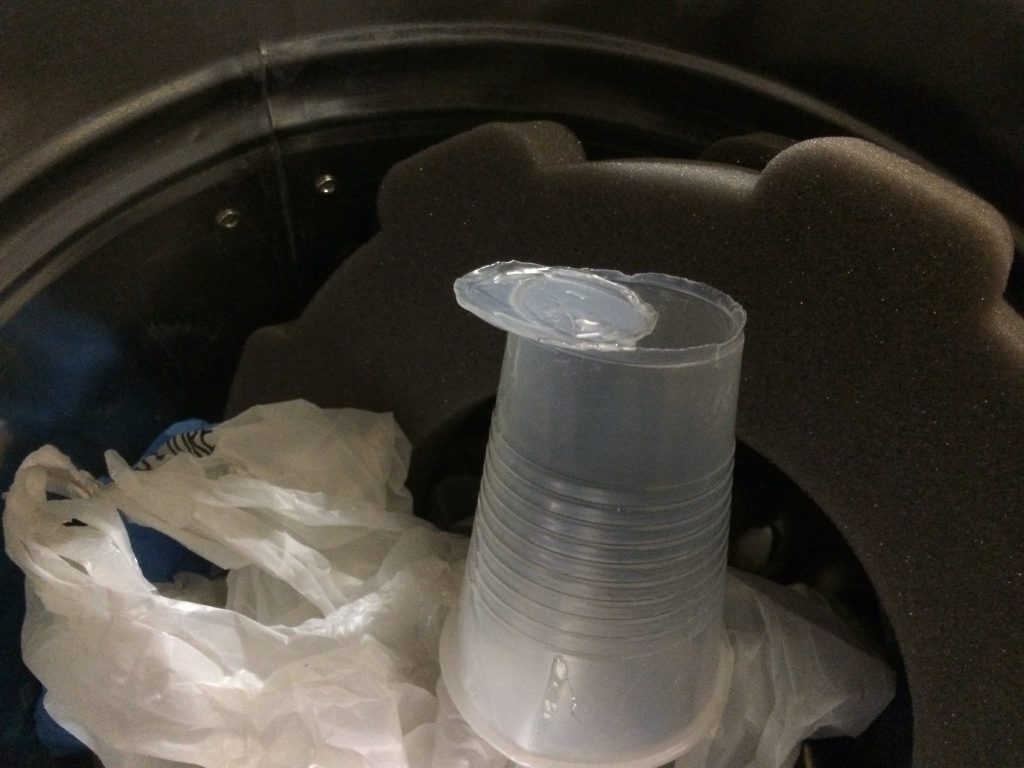
Finally, after the resin filled the channels and started to set, we ran into another issue. We had used polyester casting resin with a hardener, and it was incredibly difficult to figure out how many drops of hardener to use with the resin because of the changing temperatures the strips endured while setting in my garage. This unfortunately resulted in a permanently tacky surface that was prone to picking up dust and small gravel.
A few magnets were tossed onto the back of the strips with epoxy, then they were mounted under the jeep and the switch/diode/relay abomination was hooked up. Aaaaaaaaaaaaaaaaaaaaaaaaaaaand…

It actually worked! It was pretty solid overall, the magnets on the strips held them to the car quite well, and the relay system actually worked after swapping out a dead relay. The waterproofing seemed to be holding up despite the strips bulging way outside the channel. Clearly all the problems had been solved, and this was the end of the project. Right?
Oh wait that’s not how it ends?
I have to tune-in in another year to find out how this story ends?…
Just how deep does this rabbit hole go?……
Trust me I wish I knew. Tune in next year to find out!

